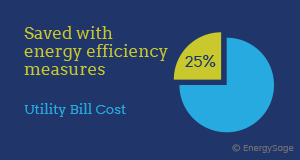Electricity estimating (likewise alluded to as electricity levies or the cost of electricity) can shift broadly by country or by territory inside a country. Electricity costs are reliant upon many variables, for example, the cost of force age, government charges or appropriations, CO2 charges, nearby atmospheric conditions, transmission and dispersion framework, and multi-layered industry guidelines. The evaluating or levies can likewise vary contingent upon the client base, regularly by private, business, and modern associations. As per the U.S. Energy Data Organization (EIA), Electricity costs for the most part mirror the expense to construct, finance, and keep up with and work Power to Choose Houston and the electricity lattice.
Where esteeming deciding is the method by which a generator, a help association, or a huge current buyer can expect the markdown expenses of electricity with reasonable precision. In light of the ensnarements of the electricity age, the cost to supply electricity varies bit by bit. A couple of administration associations are for-benefit components and their costs consolidate a money-related return for owners and monetary patrons. These help associations can rehearse their political power inside existing legal and managerial frameworks to guarantee a financial return and decrease contention from various sources like a scattered age.

Rate structure
- In standard managed imposing business model business sectors like the US, there are staggered administration structures that set electricity rates. They are still up in the air through an administrative cycle that is regulated by a Public Help Commission. What’s more, the Government Energy Administrative Commission (FERC) manages the discount electricity market alongside the highway transmission of electricity.
- Public Help Commissions (PSC), which are otherwise called Public utility commissions (PUC), direct utility rates inside each state. By and large, rates have been insignificant around evening time because the pinnacle is during the day when all areas are utilizing electricity.
- The expanded request requires extra energy age, which is generally given by less effective “peaker” plants that cost more to produce electricity than “baseload” plants. Notwithstanding, as more noteworthy entrance from environmentally friendly power sources, as sun based, are on a network the lower cost, electricity is moved to noontime when sun oriented produces the most energy.
Feed in levy
A feed-in levy (FIT) is an energy-supply strategy that upholds the improvement of the sustainable power age. In the US, FIT courses of action guarantee that certified economical generators will have their electricity purchased by their utility. The FIT understanding contains a reliable time span (normally 15-20 years) that portions in dollars every kilowatt hour ($/kWh) will be made for the full consequence of the system. Net metering is one more charging component that upholds the improvement of inexhaustible power age, explicitly, sun-oriented power. The component credits sun-based energy framework proprietors for the electricity their framework adds to the network. Private clients with roof photovoltaic (PV) frameworks will commonly create more electricity than their home consumes during sunlight hours, so net metering is especially favorable. During this time when age is more prominent than utilization, the home’s electricity meter will run in reverse to give a credit on the mortgage holder’s electricity bill. The worth of sunlight-based electricity is not exactly the retail rate, so net metering clients are sponsored by any remaining clients of the electric utility.

